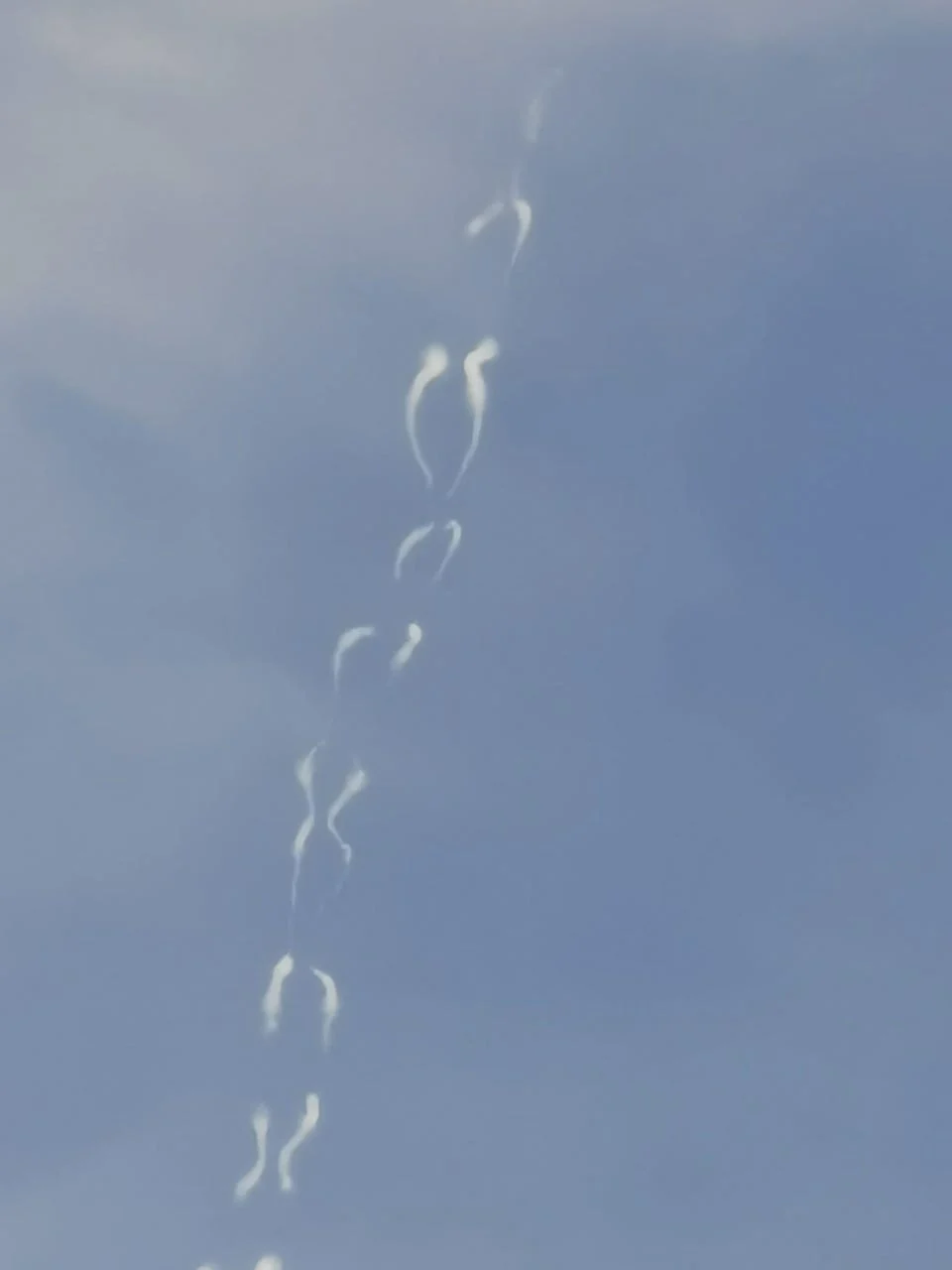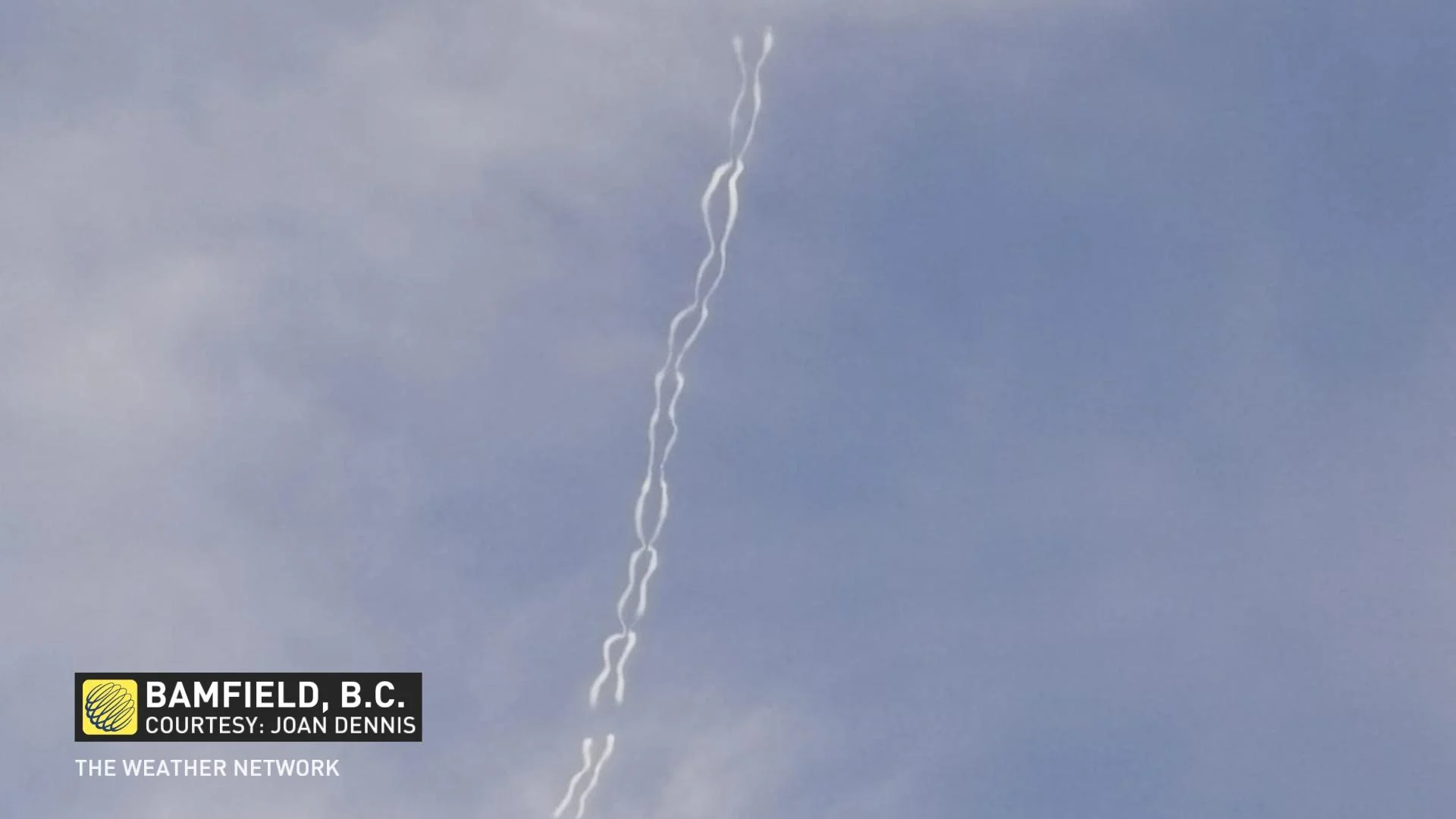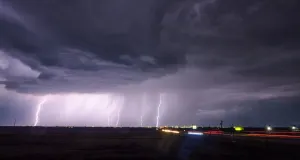
Rare 'chromosome' cloud captivates Canadians. What is that?
A serendipitous scene appeared across the skies of Vancouver Island on Monday.
There's a rational explanation. I'll walk you through my investigative process to unravel the mystery shrouding this 'DNA' cloud.
The problem is, well, it didn't look like a typical contrail. Do you know the ones? Those puffy, straight, thin clouds produced by an aeroplane.

There are a couple of ways to concoct a contrail -- and they all involve airplanes. The hot engine exhaust interacts with the cold, moist air aloft. Certain atmospheric conditions allow these contrails to persist and grow.
The second, lesser-known contrail is of the aerodynamic variety -- and here's where pressure is involved. There's a temporary lowering of the air pressure as it moves over the planes' wings. By dialing down the pressure, the air can effectively hold less water, initiating the condensation process.
Here's where things get interesting. The wake vortices created by air flowing over the wings are a perfect recipe for larger ice crystals, consequently, creating a type of hybrid contrail that can persist beyond the typical exhaust contrail.

The conditions for a hybrid contrail are rare: Ideally, temperatures below -40°C at flight level and relative humidity (with respect to ice) near 100 per cent.
The condensation from the contrail would quickly sublimate, passing from solid to a vapour state, without the low pressure enacted by the aircraft -- allowing the contrail to persist in the atmosphere.
Zooming out of the original photo, it becomes clear that this likely was a run-of-the-mill typical exhaust contrail that transitioned into a fragmented, hybrid contrail.

OK, but wait...
What causes all the bends and curves, and wonky segments?
CROW INSTABILITY
Those loops and bends? You can thank an aerodynamic process called "crow instability."
That's the wake vortices from the plane. When the exhaust is smack-dab in the centre of the vortex, we're treated to quite the dazzling display from the contrail.
This type of instability is left behind from large aircraft. When those contrails interact with the vortices, these distinct patterns are free to dance across the sky.
Thumbnail courtesy of Joan Dennis.
Source: Contrail Science










